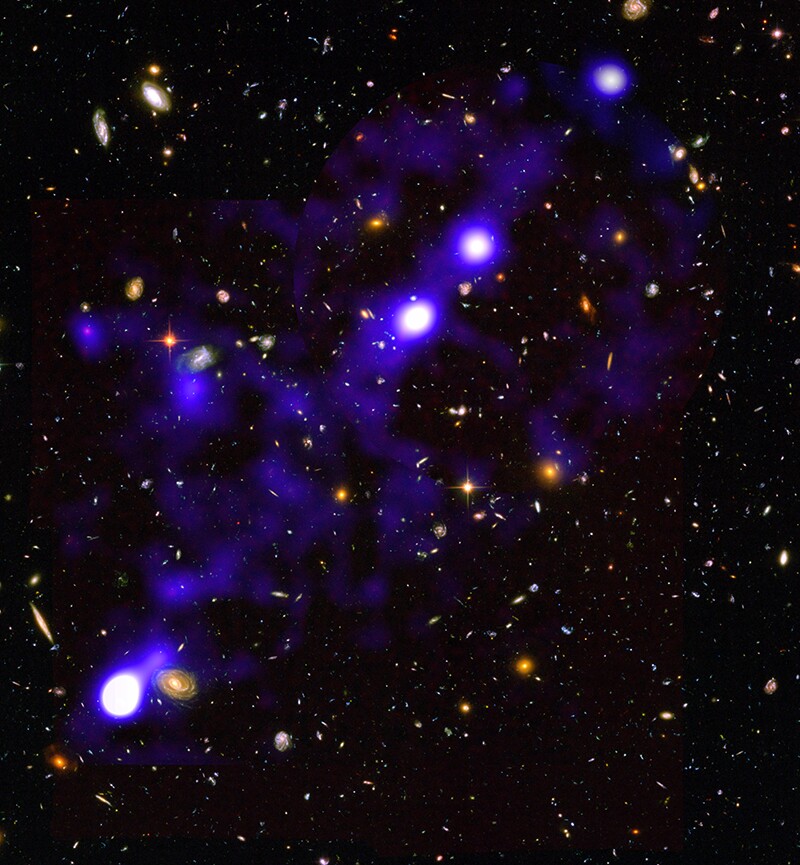
This is a broad indication of the architecture of what we understand to be Dark Matter. Third tier matter shows us a Galaxy like architecture. I do think that galaxies are formed by the creation of a void in the Dark Matter allowing first tier matter to assemble. This then produces an outpouring of second tier matter or Dark Matter.
All this is sublight. This matters because each galaxy is a separate creation as in universe. It is left behind by the light sphere created by the act of creation.
It may also be possible that light itself can coalese into first and second tier matter out well away from local gravity forces. We cannot rule this out.
However, i am hesitant to look at multi lightyear constructs as reflective of either gravity or em forces.
Glow of "cosmic web" filaments directly imaged for the first time
March 21, 2021
A simulated image of the cosmic web, where each point of light represents a galaxy undergoing star formation
Jeremy Blaizot / project SPHINX
https://newatlas.com/space/cosmic-web-filaments-imaged/
On a scale that’s hard to fathom, the universe is made up of a “cosmic web” of hydrogen filaments that feed and form galaxies. Now, astronomers have made the first direct observations of light from this web, by staring at a patch of sky with a powerful deep-field telescope to detect faint dwarf galaxies.
Physics and simulations have long predicted that the large-scale structure of the universe looks like it was spun by some colossal spider. Dark matter seems to have been distributed into filaments spanning lightyears, and that attracted regular matter like dust and gas to gather along those threads, too. Galaxies and clusters tend to clump in the nodes where these filaments meet.
Hints of these cosmic webs have been indirectly observed before, through gravitational lensing or thanks to the bright light from quasars illuminating the gas. But now, astronomers have managed to detect light from the hydrogen gas itself.
To do so, the team used the Multi Unit Spectroscopic Explorer (MUSE) instrument onboard the Very Large Telescope (VLT) in Chile. They pointed this instrument at one patch of sky and stared for 140 hours. This long exposure time allowed the diffuse light of the hydrogen emissions to come into focus, revealing 22 filament structures in the very early universe – between 0.8 and 2.2 billion years after the Big Bang.
A hydrogen filament that stretches some 15 million light-years long, discovered by MUSE in the constellation Fornax – the background image is from Hubble
Roland Bacon, David Mary, ESO and NASA
It was previously thought that any glow from these filaments would have been caused by radiation from the cosmic microwave background heating up the gas in the filaments. But when the team ran follow-up simulations, they found that the light was likely coming directly from billions of dwarf galaxies.
Interestingly, while this region had already been studied as part of Hubble’s Ultra-Deep Field survey, the new observations were able to see 40 percent more galaxies that Hubble hadn’t been able to see. And even then, many more galaxies were too faint for MUSE to pick out individually.
The team says that these extra galaxies may require an update to our understanding of how galaxies form.
The research was published in the journal Astronomy & Astrophysics.

No comments:
Post a Comment